'a halfpennyworth of news'
gazette: Origin
Early 17th Century; via French for Italian gazzetta, originally Venetian gazeta de la novita 'a halfpennyworth of news' (because the news-sheet sold for a gazeta, a Venetian coin of small value)
Early 17th Century; via French for Italian gazzetta, originally Venetian gazeta de la novita 'a halfpennyworth of news' (because the news-sheet sold for a gazeta, a Venetian coin of small value)
17th September 2023
Dr Johnson's Birthday Tea Party
Once embarking on the plans for the tea party, tea and its history seems to crop up on a regular basis of late.
Dr Johnson's drank tea by the gallon and seemed to have no time for the new-fangled drink of the time, coffee! Some one having commented on this was told, 'Sir, I did not count your glasses of wine, why should you number up my cups of tea?'
Listening to Radio 4 a week or so ago I switched on to 'All Consuming' a programme taking a close look at those items that appear in our daily lives and which it seems we cannot live without. The culture of consumption and tea was the topic of that day.
Several points were highlighted, for instance how tea shaped the course of history, our colonial outposts in India and Africa brought us into contact with tea. The East India companies ensured tea played a large part in creating the wealth of Empire. Who knew, it is in fact one plant, that can provide a variety of flavours. Originally tea leaves were not easily preserved and had to be well taken care of. Also an expensive commodity not available to all. However steaming it was discovered preserved the tea, which produced green tea. How black tea came about is apparently due to sweaty, dusty soldiers sleeping in a tea warehouse. Growers were appalled! What were they to do? The bruised leaves were basically 'cooked' on smoky fires to cover the oxidation and black tea was created!
The programme goes on to discuss a 'cup of tea' as an emblem. What it means to be British and how the cup of tea became the favoured beverage can tells so much about our nation.
Tea as healer also came up. I recall growing up in Lancashire 'let's have a cup of tea', was a cure for all that ails us from shock to a broken heart and all in between. It is familiar to most of us and a tradition. This apparently sends autocues to your brain to say 'I'm OK', or 'I'm safe'. Studies show that drinking a hot drink makes one more giving and likely to rate the person drinking with you in a more favourable light. Physically warming, the drink will develop 'warm' thoughts. That cup of tea (hot drink) IS the social connection.
How may cups of tea are consumed in the United Kingdom in one day? Listen to the programme or come and join us at Dr Johnson's House to find out!
Hear the programme here : www.bbc.co.uk/sounds/play/m001nvqg
Dr Johnson's Birthday Tea Party
Once embarking on the plans for the tea party, tea and its history seems to crop up on a regular basis of late.
Dr Johnson's drank tea by the gallon and seemed to have no time for the new-fangled drink of the time, coffee! Some one having commented on this was told, 'Sir, I did not count your glasses of wine, why should you number up my cups of tea?'
Listening to Radio 4 a week or so ago I switched on to 'All Consuming' a programme taking a close look at those items that appear in our daily lives and which it seems we cannot live without. The culture of consumption and tea was the topic of that day.
Several points were highlighted, for instance how tea shaped the course of history, our colonial outposts in India and Africa brought us into contact with tea. The East India companies ensured tea played a large part in creating the wealth of Empire. Who knew, it is in fact one plant, that can provide a variety of flavours. Originally tea leaves were not easily preserved and had to be well taken care of. Also an expensive commodity not available to all. However steaming it was discovered preserved the tea, which produced green tea. How black tea came about is apparently due to sweaty, dusty soldiers sleeping in a tea warehouse. Growers were appalled! What were they to do? The bruised leaves were basically 'cooked' on smoky fires to cover the oxidation and black tea was created!
The programme goes on to discuss a 'cup of tea' as an emblem. What it means to be British and how the cup of tea became the favoured beverage can tells so much about our nation.
Tea as healer also came up. I recall growing up in Lancashire 'let's have a cup of tea', was a cure for all that ails us from shock to a broken heart and all in between. It is familiar to most of us and a tradition. This apparently sends autocues to your brain to say 'I'm OK', or 'I'm safe'. Studies show that drinking a hot drink makes one more giving and likely to rate the person drinking with you in a more favourable light. Physically warming, the drink will develop 'warm' thoughts. That cup of tea (hot drink) IS the social connection.
How may cups of tea are consumed in the United Kingdom in one day? Listen to the programme or come and join us at Dr Johnson's House to find out!
Hear the programme here : www.bbc.co.uk/sounds/play/m001nvqg
16th December 2022
Simpson's Tavern off Cornhill CLOSED!
It was with some surprise, shock and horror we discovered in mid-October that Simpson’s Tavern had been closed without notice by the off-shore owner of the freehold. A foreclosure notice was pasted on the windows and doors, and the locks changed!
Not sure as to what was happening and why, we made a call to Simpson’s to have our worst fears confirmed, the chop house was unlikely to be opened for the Christmas Season. Our event on 8th December was not going ahead at our favoured venue.
As a chop house established in 1757, Simpson’s Tavern will be a huge loss to the City of London. Also, to the many people who have frequented it over many decades. Please note this affected more than the workers in the Square Mile.
The outcry of disgust and distress became international, so many remembered their happy days of feasting and imbibing at this traditional restaurant. The press jumped to it and not only the restaurant reviewers, local and national news took up the baton. Twitter chirped its soul out and Facebook demanded justice of the philistines who would consider such a closure of an ancient and revered haunt.
Crowdfunding was put in place immediately and today £112,696 has been raised of the required £385,000. Many supported fast and furiously, but as you can see funds are still required, and there are only 27 days to go. https://www.crowdfunder.co.uk/p/save-our-simpsons-tavern
Simpson’s Tavern is back in the news on 15th December, when the support of Peter Dunphy, who is a City of London Councillor for the ward of Cornhill, joined in the support of ‘Save Our Simpsons’. A request was put before the Court of Common Council to grant protection of Simpson’s as an Asset of Community Value. The vote was was unanimous! Read about it here: https://www.ianvisits.co.uk/articles/simpsons-tavern-granted-protection-as-it-fights-to-reopen-59416/
We now await the fate of the sale of the property, Simpson’s Tavern as was, is at the forefront and negotiating with the vendor.
For our part we found a new (temporary) venue at Ye Olde Watling. The manager and staff made us very welcome. The Dining Room was perfect, the menu excellent and we enjoyed ourselves in our usual Georgian manner. Also a special thank you to our guests, who supported us with the swift move.
It is with hope and trust we may return to our favourite chop house some day soon to celebrate the continuance of over 250 years of excellent dining and conviviality.
Please support ‘Save our Simpsons’ in any way you can, Crowdfunding, Facebook, and Twitter.
Simpson's Tavern off Cornhill CLOSED!
It was with some surprise, shock and horror we discovered in mid-October that Simpson’s Tavern had been closed without notice by the off-shore owner of the freehold. A foreclosure notice was pasted on the windows and doors, and the locks changed!
Not sure as to what was happening and why, we made a call to Simpson’s to have our worst fears confirmed, the chop house was unlikely to be opened for the Christmas Season. Our event on 8th December was not going ahead at our favoured venue.
As a chop house established in 1757, Simpson’s Tavern will be a huge loss to the City of London. Also, to the many people who have frequented it over many decades. Please note this affected more than the workers in the Square Mile.
The outcry of disgust and distress became international, so many remembered their happy days of feasting and imbibing at this traditional restaurant. The press jumped to it and not only the restaurant reviewers, local and national news took up the baton. Twitter chirped its soul out and Facebook demanded justice of the philistines who would consider such a closure of an ancient and revered haunt.
Crowdfunding was put in place immediately and today £112,696 has been raised of the required £385,000. Many supported fast and furiously, but as you can see funds are still required, and there are only 27 days to go. https://www.crowdfunder.co.uk/p/save-our-simpsons-tavern
Simpson’s Tavern is back in the news on 15th December, when the support of Peter Dunphy, who is a City of London Councillor for the ward of Cornhill, joined in the support of ‘Save Our Simpsons’. A request was put before the Court of Common Council to grant protection of Simpson’s as an Asset of Community Value. The vote was was unanimous! Read about it here: https://www.ianvisits.co.uk/articles/simpsons-tavern-granted-protection-as-it-fights-to-reopen-59416/
We now await the fate of the sale of the property, Simpson’s Tavern as was, is at the forefront and negotiating with the vendor.
For our part we found a new (temporary) venue at Ye Olde Watling. The manager and staff made us very welcome. The Dining Room was perfect, the menu excellent and we enjoyed ourselves in our usual Georgian manner. Also a special thank you to our guests, who supported us with the swift move.
It is with hope and trust we may return to our favourite chop house some day soon to celebrate the continuance of over 250 years of excellent dining and conviviality.
Please support ‘Save our Simpsons’ in any way you can, Crowdfunding, Facebook, and Twitter.
Simpsons Tavern - Yuletide Fest - October 2019
If you wish to make contact with our superlative entertainments:
Necromancer : www.thelondonspy.com/
Baritone: www.alistairsutherland.com/
Dr Matthew Green: unrealcityaudio.co.uk/
Necromancer : www.thelondonspy.com/
Baritone: www.alistairsutherland.com/
Dr Matthew Green: unrealcityaudio.co.uk/
|
A special treat - Alistair Sutherland serenading a guest to celebrate her birthday. |
|
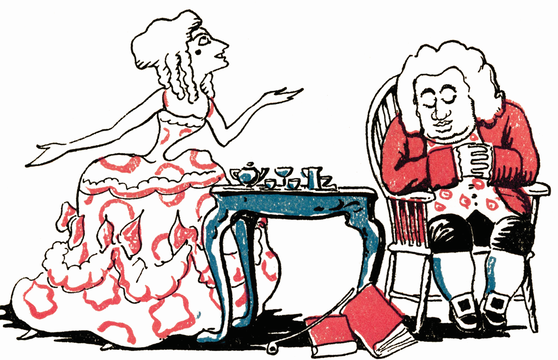
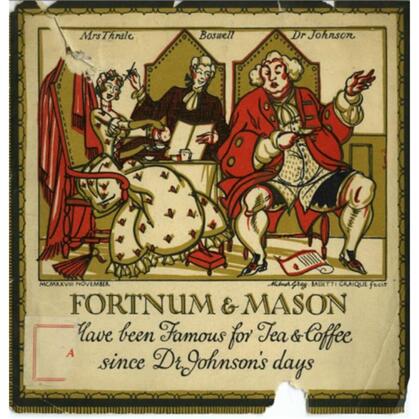
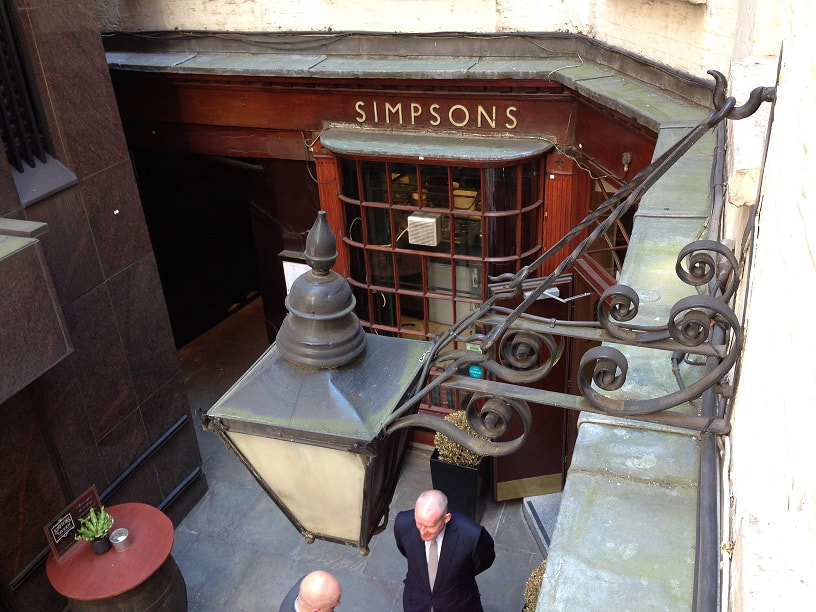
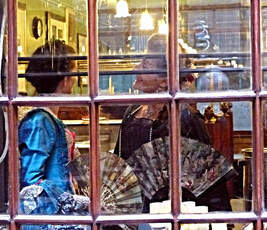
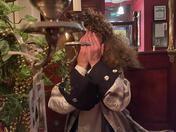
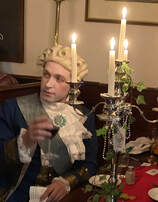

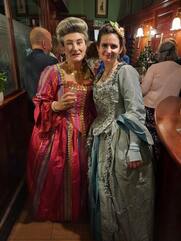
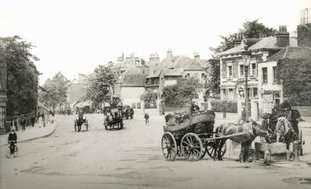
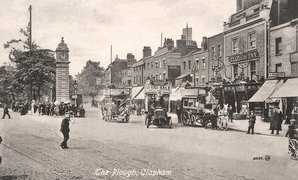
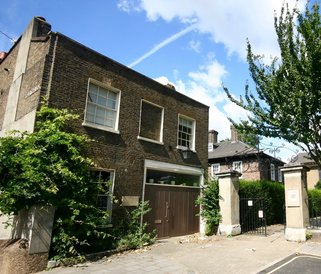


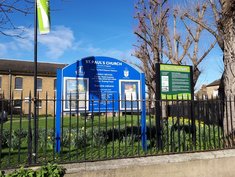
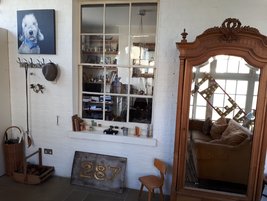
 RSS Feed
RSS Feed